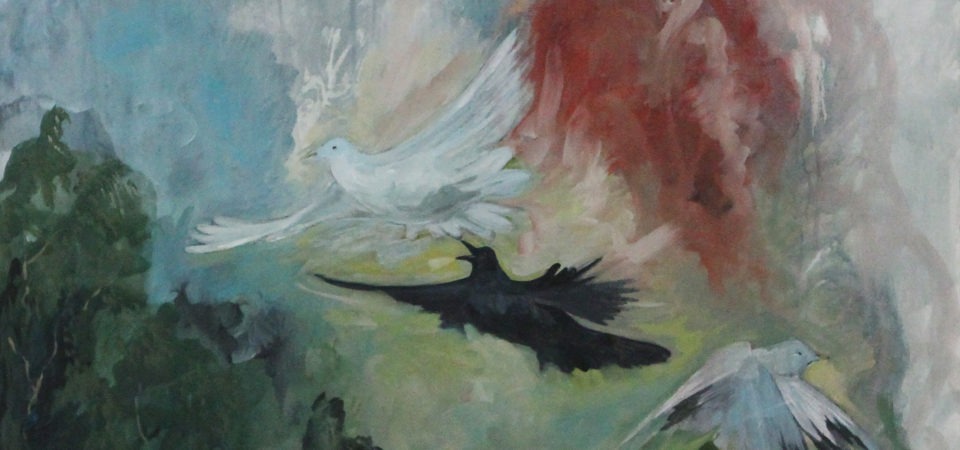Consciousness is a young English word, not yet born when Milton wrote: The mind is its own place, and in it 'self' can make a 'Heaven of Hell, a Hell of Heaven'
Environmental philosopher Val Plumwood suggests; “prevailing western culture has created a human – nature dualism – in this world view, nature is radically different from the human and human culture is radically separated from it.”
My art practice over the past decade has developed from my interest in existential philosophy, around thinking about the self, consciousness, collective consciousness, and my love for painting.
This philosophical interest naturally evolved towards climate change and ecology challenges supported by secondary research sources. My artwork is motivated by personal feelings I have felt and experienced over this decade when I have experienced extreme weather events in our Southern African region. The current La Nina, Pacific Ocean weather pattern has increased floods and cyclones. In the previous El Nino pattern, we experienced extreme water shortages in our cities due to extended drought conditions and apocalyptic wildfires in the Western Cape province.
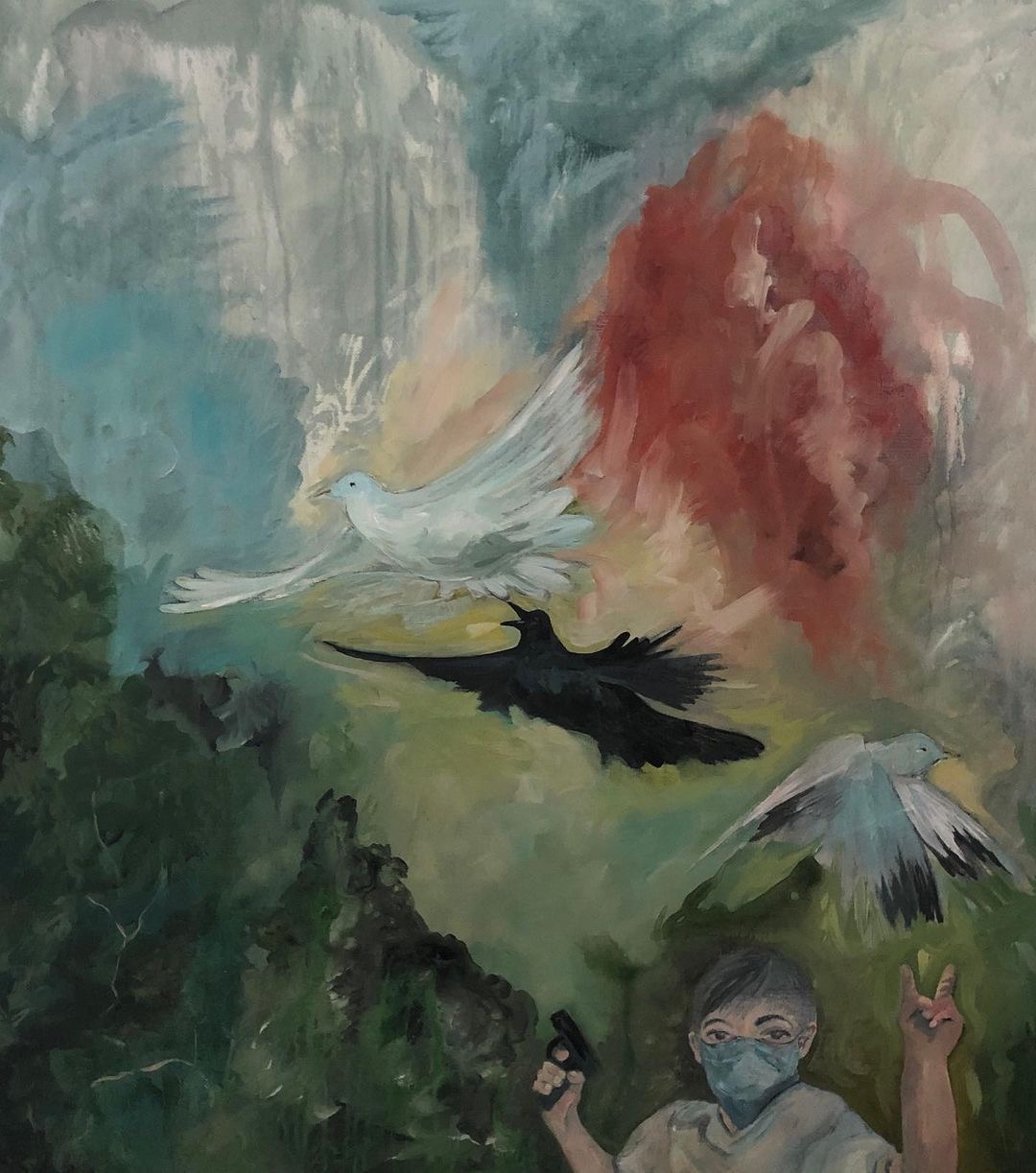
War on Nature
Acrylic painting on Belgium canvas – 100cm:100cm:5cm – 2022
A couple of years ago, I was traveling in a car with my husband in the Eastern Cape province when we drove into the storm’s eye, which I experienced as a horrific assault by hail, the size of tennis balls. I have never seen anything like it and will never forget how I was immediately captivated and drawn to the dark, beautiful purple, grey, and blue cloud that brought the hailstorm and yet how violent it became, striking everything in its path. We were both lucky to have survived it, relatively bodily unharmed. The car we were driving was not so fortunate.
Antonio Damasio writes in his book, ‘Feeling and Knowing: making minds conscious’ that, “The power of feelings comes from the fact that they are present in the conscious mind: technically speaking, we feel because the mind is conscious, and we are conscious because there are feelings…Feelings were and are at the beginning of an adventure called consciousness.”
I understand his model of ‘consciousness’ as an antidote to the hubris with which humanity regards itself and other life forms..the hubris of human exceptionalism across species, which presumes that our superior cognitive capacity relative to other animals means greater consciousness.
Damasio believes that when we understand the consciousness that lenses our view of reality, we can dismantle the artificial hierarchies that have bolstered our centrality, from Anthropocentrism, etc.

Island of Fertility
Acrylic painting on Belgium Canvas – 100cm:100cm:5cm – 2021
McKibben (1990) writes “Over the last century, human life has become a machine for burning petroleum. Humans have lived for thousands of years pyrotechnically. They have been burning, melting, mixing inanimate materials such as coal and iron, resulting in what can only be called runaway fossil fuel consumption.“
Biologist John De Long explains that power (defined as the rate of energy transfer) is key to the survival and success of species. Biological systems organize to increase power when the system constraints allow, with greater power, there is an opportunity to allocate energy to reproduction and survival, an organism that captures and utilizes more energy than another organism in a population will have a fitness advantage.
Our species has gained unprecedented power by harnessing the energy of fossil fuels. All stuff made by man now outweighs all of Earth’s biomass. It’s been the biggest grab on this planet, and we even have a name for it.
THE ANTHROPOCENE.
Ehrlich et al 2012 statement comes to mind;
“Humanity is running an Ecological Ponzi scheme, in which society robs nature and future generations to pay for boosting incomes in the short term.”
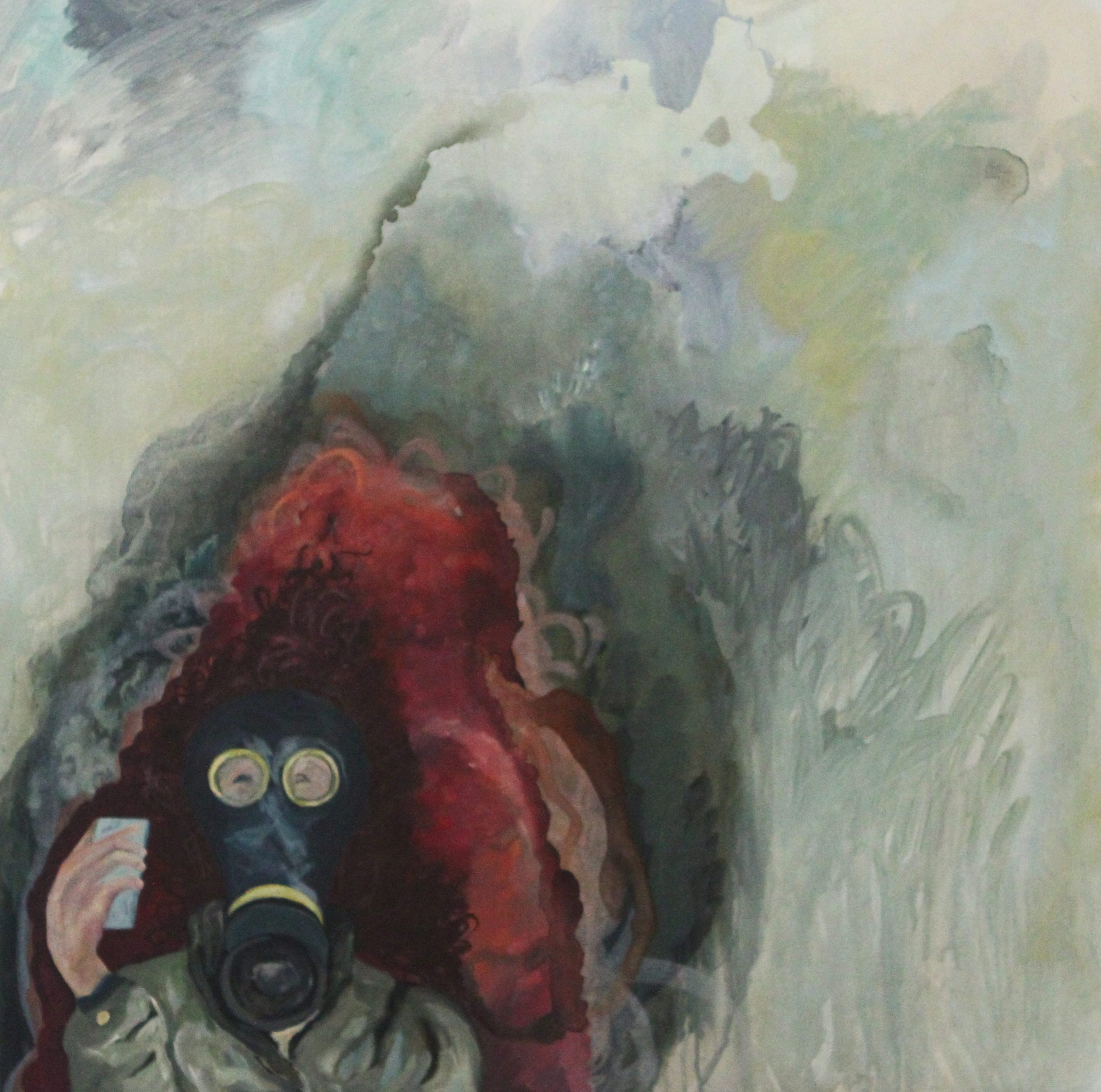
The hand of humans
Acrylic painting on Belgium Canvas – 100cm:100xm:5cm 2021
Timothy Morton writes in his book, ‘Hyper objects – philosophy and ecology after the end of the world’ global warming is the most dramatic example of hyper objects. He says they are; “entities of such vast temporal and spatial dimensions that they defeat traditional ideas about what a thing is in the first place. You cannot ‘see’ global warming. You only see snapshots of what is a very complex plot of a superset of algorithms that is executing themselves in high dimensional phase space.”
Morton argues that hyper objects show that the end of the world has already occurred in the sense that concepts such as world, nature, and even environment are no longer a meaningful horizon against which human events take place. Instead of inhabiting a world, we find ourselves inside several hyper objects, such as climate, nuclear weapons, evolution, or relativity. They are profoundly futural and last for a hundred thousand years. The ruptures are the invisible presence of the hyper object itself, which looms around us constantly, making hypocrites of us all.
The motivation for practicing as an artist has always been my love for painting.
Terry Winters’ work follows the idea of the importance of the artist’s ‘hand’ and brings the ‘hand’ and drawing back into painting with nostalgia for gesture and signature flourishes.
The link between drawing and thinking is decisive to his works, praising painting as an everyday activity.
Resonating with this idea, I feel optimistic as my art practice reaches a crossroads.
I select materials in the art pieces I make to add to the representation, expression, and visual awareness of what I am thinking. I use acrylic paint, cotton canvas, recycled plastic, plants, and re-usable found objects. I do so, knowing that my practice is evolving, as reflected in my installation ‘Nature’s apothecary’ (2022), shifting my practice towards exploring visual ideas that consider sustainability and are temporary.
I have also purposefully started exhibiting my work online as much as possible. I collaborate with artists exploring sustainable project ideas. They inspire me to reduce and limit my carbon footprint. I am motivated by activist Greta Thunberg’s actions and statement, ‘If not me, then who?
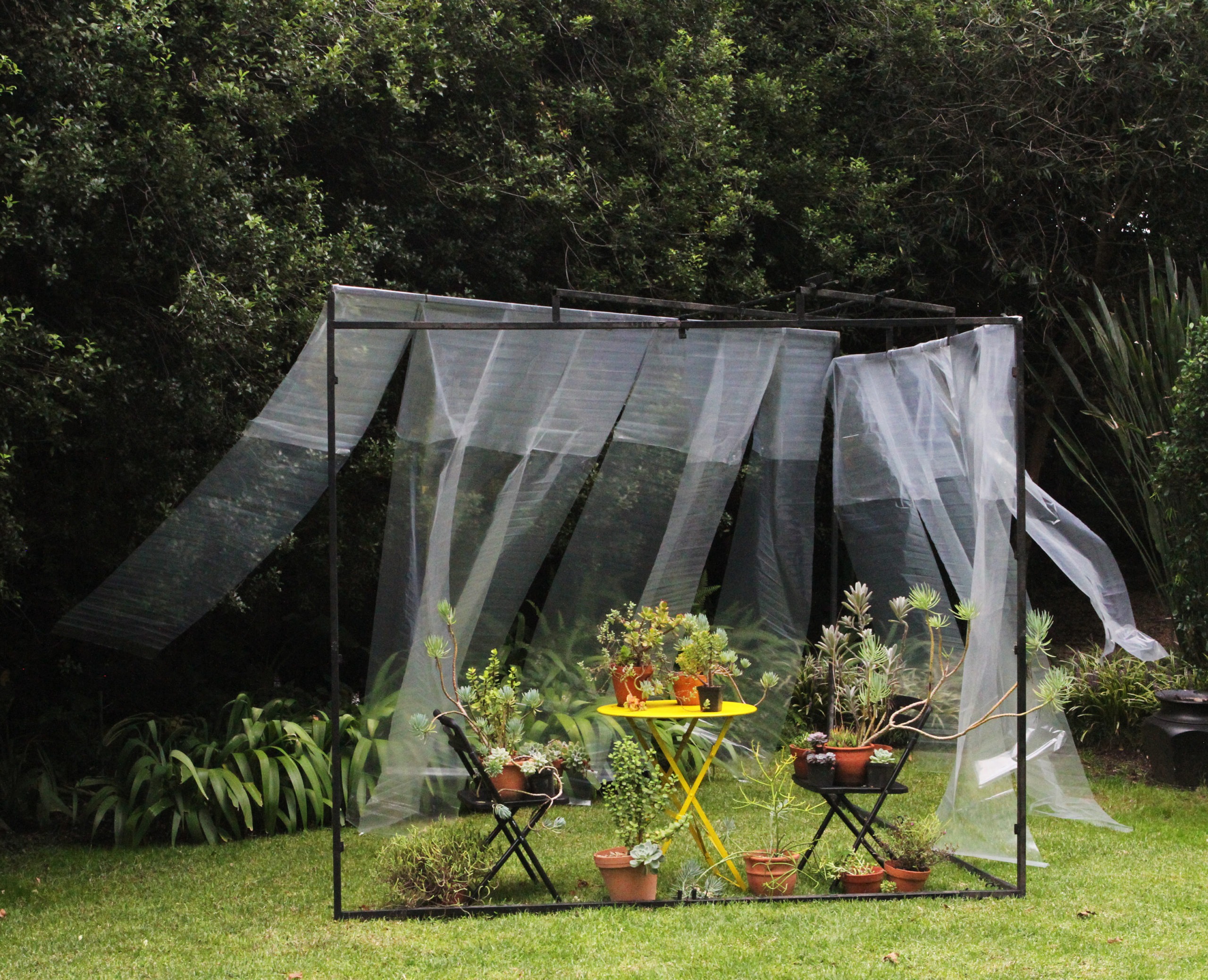
Nature’s apothecary
mixed media installation: 2.5m:2.5m:2.5m – 2022
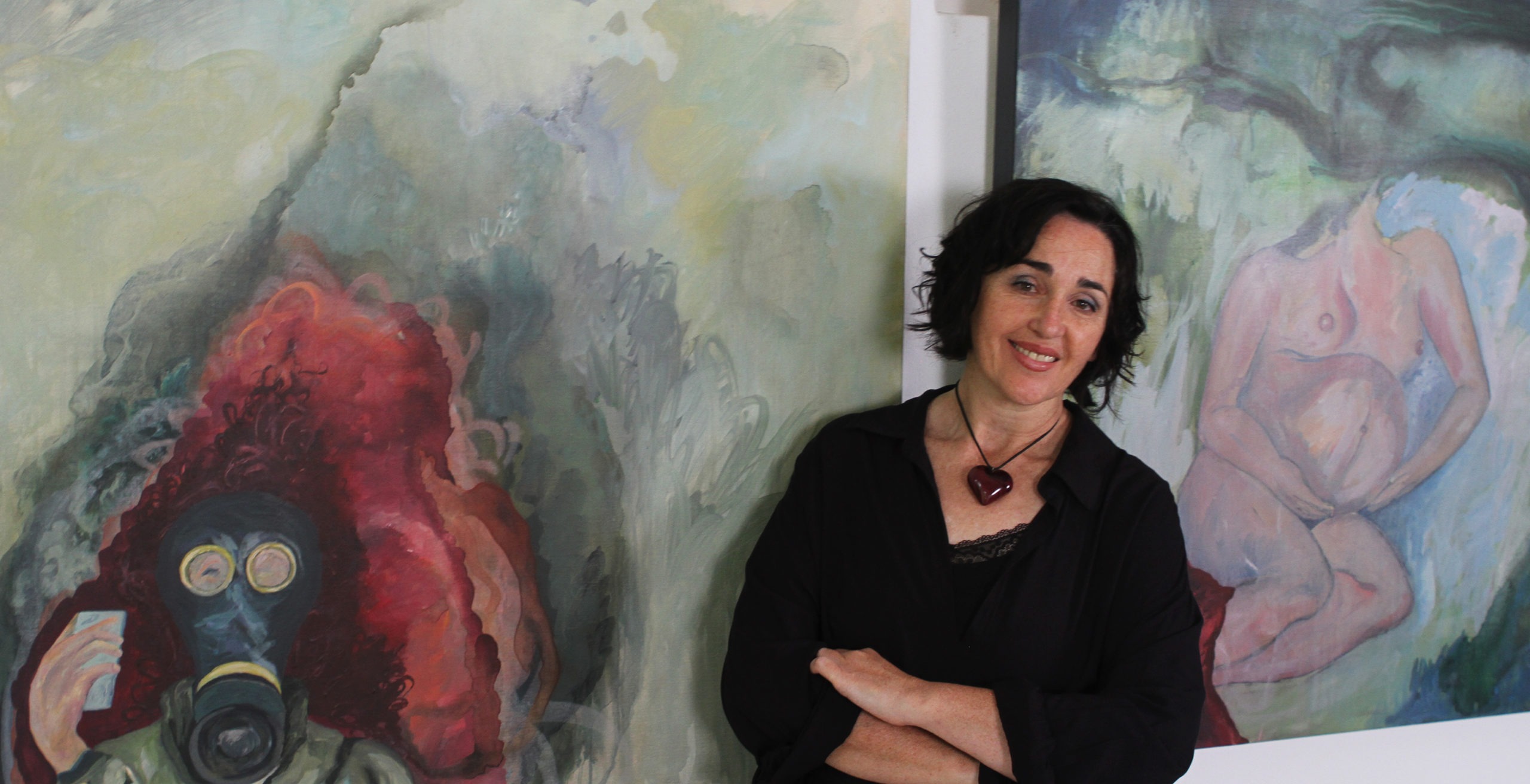
Tessa Teixeira’s artistic practice and work focus on Existential Philosophy and Ecology, and Climate narratives, through the use of mixed media, painting, installation, and printmaking.
She completed a Bachelor’s in Primary Education, majoring in Art, in 1991 through the University of the Witwatersrand, South Africa.
She was extensively involved in projects addressing access to housing in lower-income communities. She started an NGO and raised the money to build two primary schools for children who were receiving tuition under trees. She worked for The Mineworkers Development Agency, the development wing of The National Union of Mineworkers, addressing rural development and economic needs in South Africa.
In 2006 she started actively focusing on her Art practice and embarked on various short Art development programs in San Francisco (2010) and London (2011).
She returned to Johannesburg in 2011.
Her work has been exhibited nationally and internationally. Some recent exhibitions include:
– Carbon, border, Voices, online group exhibition, UK (2022),
– EcoArtproject online artist feature, NYC, US (2022),
– 1.5 Degrees, Berlin, Germany (2021),
– What’s Next for Earth? Online exhibitions: Depletion (2021) & Thinking in Systems (2022), MAHB, Stanford University, US,
– Enviro Art gallery 2021, Dukes University, US (2021),
– Amref Artball, Auctionpre-featured on Artsy, New York, US (2019), – Optimism’ Endless Editions Biennial, New York, US (2018),
– Art of Lithography, The University of the Witwatersrand Museum (WAM),
– Solo show Nothing stands still, Johannesburg Holocaust & Genocide Centre (2018)
This article is part of the MAHB Arts Community‘s “More About the Arts and the Anthropocene”. If you are an artist interested in sharing your thoughts and artwork, as it relates to the topic, please send a message to Michele Guieu, Eco-Artist and MAHB Arts Community coordinator: michele@mahbonline.org.
Thank you. ~

